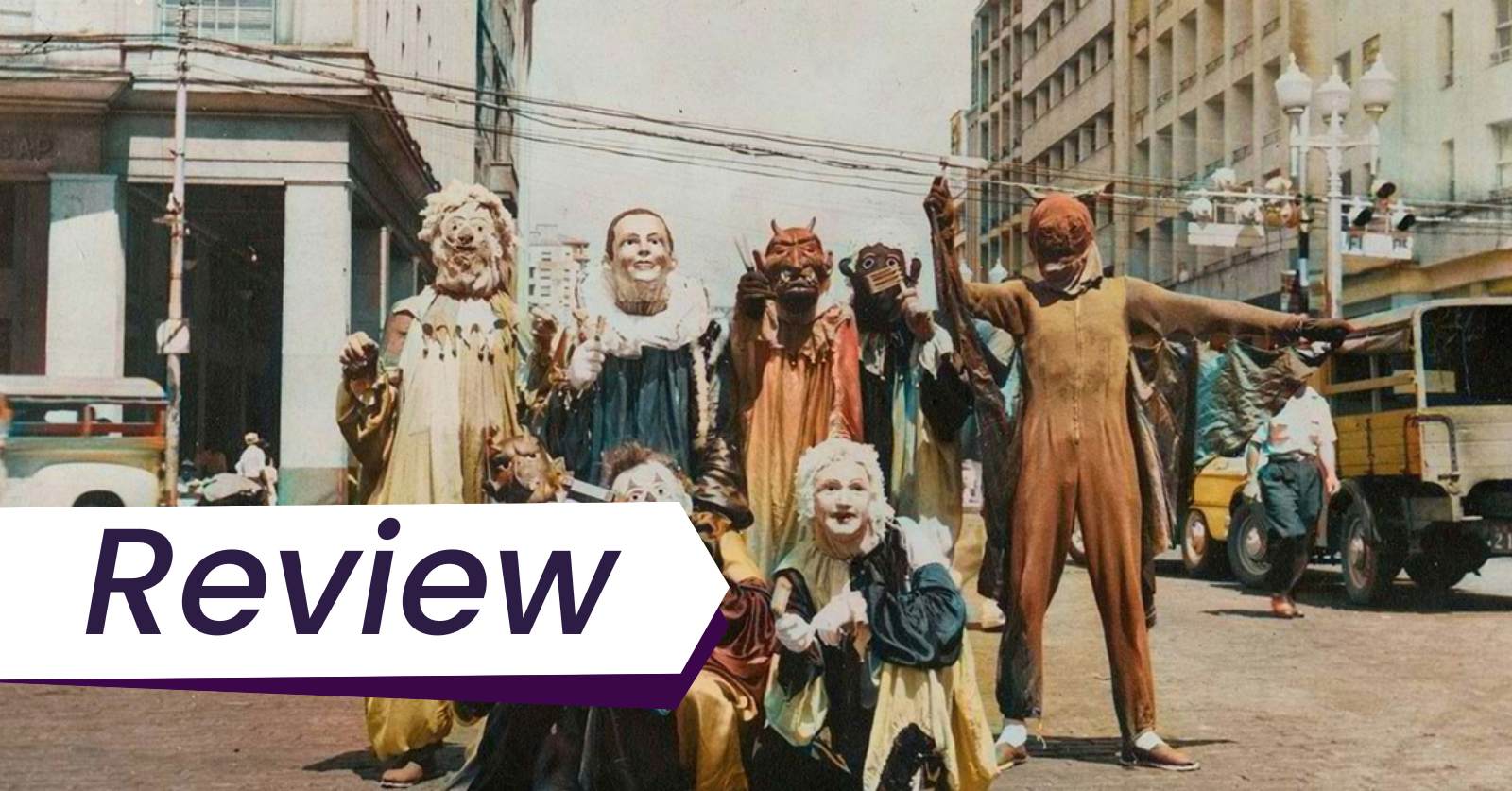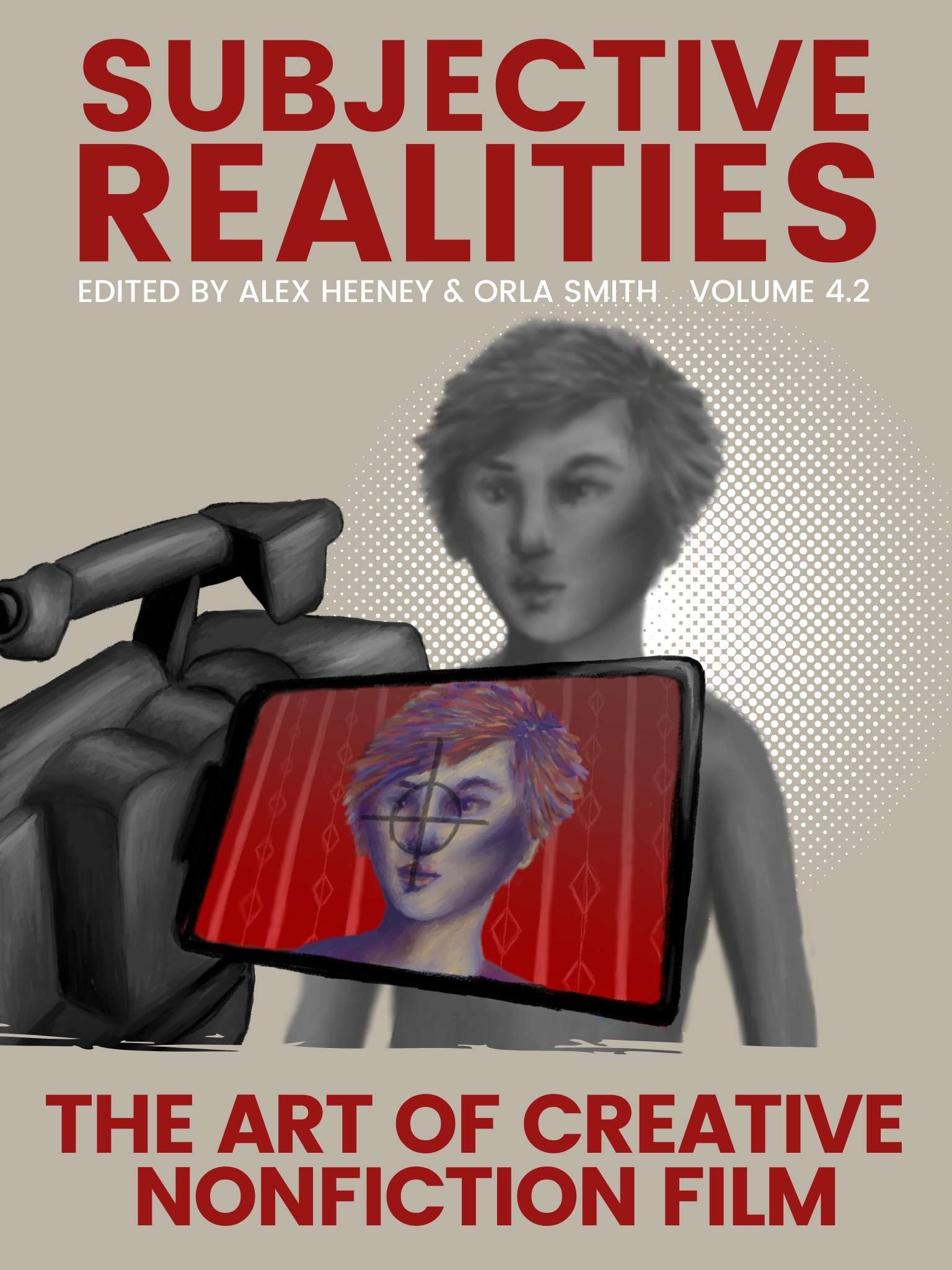Kleber Mendonça Filho’s creative nonfiction documentary Pictures of Ghosts is an ode to the public and private spaces where we live our lives and how they hold our memories.
Discover more great creative nonfiction films with the ebook Subjective Realities: The Art of Creative Nonfiction Film<.You can get your copy here.

Discover one film you didn’t know you needed:
Not in the zeitgeist. Not pushed by streamers.
But still easy to find — and worth sitting with.
And a guide to help you do just that.
Explore the spectrum between fiction and nonfiction in documentary filmmaking with the ebook Subjective Realities: The Art of Creative Nonfiction Film.
You can get your copy of the book here.
Kleber Mendonça Filho’s creative nonfiction documentary Pictures of Ghosts is an ode to the public and private spaces where we live our lives and how they hold our memories. The first section is the story of his apartment in Recife that he’s lived in for decades — first as a child, then as an adult. It has also been the set for his film, Neighbouring Sounds, a creative space for film production, and the site of so many important moments in his life. The second section of the film explores the cinemas of downtown Recife, many of which have been closed down and boarded up, and how these important meeting grounds are also sites of memory and history.
Pictures of Ghosts feels like the documentary counterpart to Mendonça Filho’s film Aquarius, which was about a woman refusing to leave the apartment she’s lived in for decades even though her building has been condemned. When I interviewed Mendonça Filho about Aquarius, he told me, “I wanted to make sure that I shot the physical space in such a way that you would always understand where Clara is when you see her in the apartment. I actually wanted that if somebody sees the film, he or she could go after the screening to some bar or restaurant and draw on a napkin a basic map of Clara’s apartment by just remembering the shots in the film.” It was an early sign that Mendonça Filho is deeply interested in how the spaces we inhabit shape our lives, and how film has the power to contain these memories, as well.
Exploring themes from Aquarius in a more personal, documentary context
That commitment to geographical space Mendonça Filho had in Aquarius is on display in Pictures of Ghosts. Here, Mendonça Filho mixes old home movies of people traversing the halls of his apartment with present-day footage that follows the same path through it. There are scenes from Neighbouring Sounds, as well as recreations of events Mendonça Filho remembers happening in the apartment, including a time when one of the leads of Sounds came over for dinner and sat in the exact same place as she had in their film.
We’re never quite sure when what we’re watching was shot, what’s real, and what’s recreated for the film. And that’s part of the point. Our memories play tricks with us. We remember people and events linked to places but may no longer remember what happened accurately. Documenting a memory can change it, too. Recreations for the film are an expression of that.
When Mendonça Filho moves out of the home and into the city, he introduces us to the intersection which once held the city’s most major cinemas. Here, there are shared histories of discovering cinema and finding moments of connection. In a particularly poignant montage, Mendonça Filho regrets the loss of the cinema marquee. He shows us photographs of the area’s marquees dating back to the early twentieth century.
The films on show mark the time, and the photographs sometimes also contain people. We see versions of the same cinema over time, through renovations, thanks to photographs, archival footage, and recreations. In one cinema, we meet the projectionist whom Mendonça Filho befriended and filmed years ago. The cinema closed down decades ago. Mendonça Filho shows us photographs he took of the empty cinema lobby on its closing day. Today, Mendonça Filho takes us to the ruins that it became.
There are plenty of interesting anecdotes along the way that speak to the way politics and the movies are intertwined. The UFA cinema in downtown Recife was originally commissioned by the Nazis in the 1930s to screen pro-Third-Reich propaganda for a susceptible Brazillian audience. Eventually, the Nazis pulled out, but the cinema retained the UFA name. A building where all of the major American distributors had offices has been boarded up and converted into something else. Now, the current occupants insist no movie studios ever operated here. Even public memory is prone to unreliable shifts. In fact, the offices closed down near the dawn of digital cinema. American companies decided to operate solely out of Sao Paolo, two-thousand kilometres away.
All cinema is documentary in Kleber Mendonça Filho’s documentary film Pictures of Ghosts
The titular pictures of ghosts refers to many things related to the nature of memory, cinema, and spaces — and how they’re all intertwined. Initially, Mendonça Filho tells the story of a photograph he took that seemed to have some kind of phantom appear in it, that he can’t explain the origin of. But soon, it takes on more metaphorical meaning. Aren’t all photographs and films essentially capturing ghosts — ephemeral things that only existed in that way at that time?
It’s not a novel concept to claim all cinema is documentary. Films about cities, especially, have this built into their framework, like Oslo, August 31st as a portrait of 2010 Oslo, and The French New Wave films as time capsules of 1960s France. Pictures of Ghosts likewise follows in the footsteps of personal documentaries like Chantal Akerman’s No Home Movie, a document as much about Akerman’s mother’s apartment as her mother’s. Pictures of Ghosts is a welcome entry into the personal documentary genre, which explores emotional, metaphorical, and physical spaces. Mendonça Filho regularly blurs the line between what he explicitly shot for Pictures of Ghosts and what footage he shot at another time for another purpose. Regardless of its original purpose, every image of a space or place is a document.
An essay on Chantal Akerman’s No Home Movie and News from Home also features in the ebook Subjective Realities: The Art of Creative Nonfiction Film. You can get your copy of the book here.
There’s an overwhelming melancholy and nostalgia to the film, as well as a deep and abiding love for both the cinema and the spaces where we live our lives. Many of the old movie houses have closed down. Mendonça Filho explains that these great cathedrals — the film documents and describes religious buildings and cinemas as cathedrals — are dwindling. As people go to the movies less, these spaces that were once sites of major events in a cinephile’s life are disappearing.
There’s a scene where we watch a group of viewers file out of a screening. They chat on the street afterward. Even if you’ve never been to Recife or to this cinema, you’ll recognize this universal cultural event. It will trigger your own memories of emerging from a cinema in a trance, excited to talk about what you’ve just seen. Pictures of Ghosts, fortunately, delivers that experience, too. It awakens the mind and the heart to the possibilities of cinema and to the way cinema documents the spaces that hold our memories.
Related reading/listening to Kleber Mendonça Filho’s film Pictures of Ghosts
More films by Kleber Mendonça Filho: Read our interview with the director about his film Aquarius and Bacurau. Read our essay on Aquarius and the importance of place in the film.
Fiction films that also serve as contemporary documents: Oslo, August 31st was our #1 film of the 2010s. It is a great document of Oslo in 2010, and the filmmakers discuss this in our interviews with them.
More creative nonfiction films. Explore the spectrum between fiction and nonfiction in documentary filmmaking with the ebook Subjective realities: The Art of Creative Nonfiction. You can get your copy here.
Kleber Mendonça Filho’s filmmaking approach cf. other contemporary filmmaker. Excerpts from my interviews with Mendonça Filho appear in our ebook In their own words: Fiction Directors. The book compares the differing approaches to directing of great contemporary filmmakers — including Joachim Trier, Céline Sciamma, and Lynne Ramsay. You can get your copy of Fiction Directors here.
More from TIFF 2023: Read all of our TIFF 2023 coverage.


